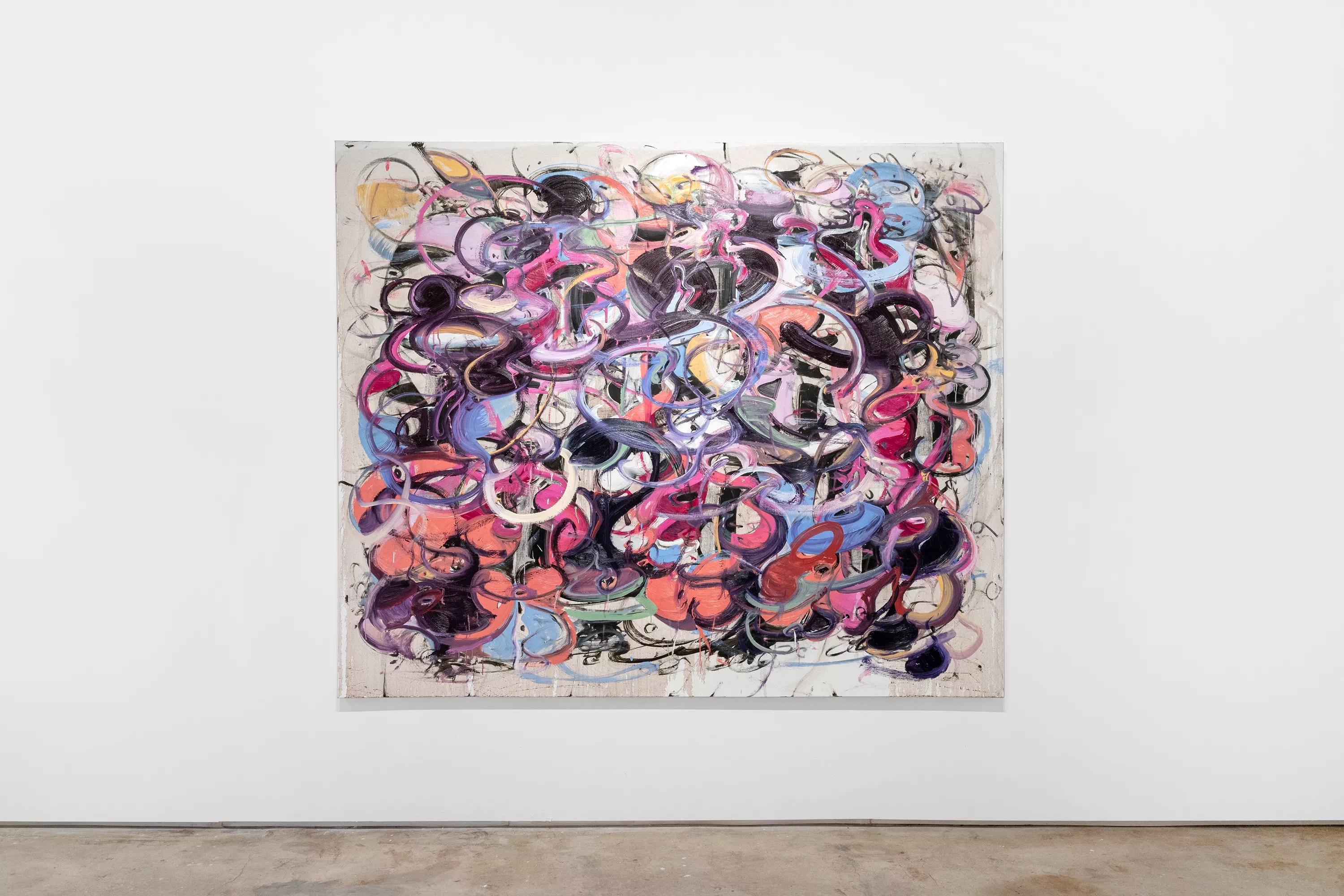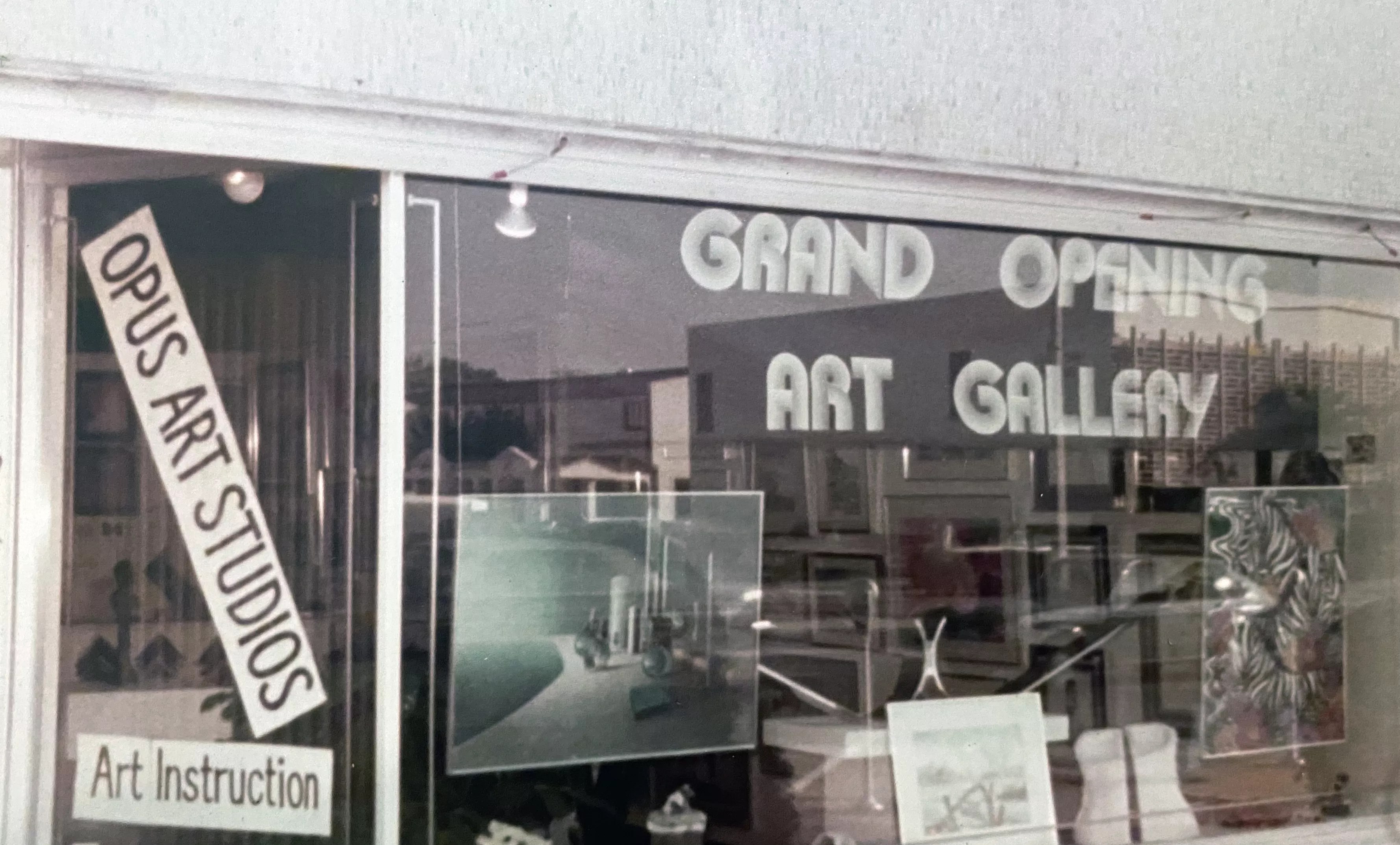
Fredric Snitzer Gallery photo

Audio By Carbonatix
Forty-five years since opening his eponymous Miami gallery, Fredric Snitzer reflects on the various parts of himself he’s put into art. Hair, to be specific.
“A funny thing was when I first started losing my hair, I didn’t have a lot of sophisticated equipment, and I started doing all the framing myself,” says the art dealer. “Everybody in their frame got a little bit of my hair that I just couldn’t blow out or whatever, so that my genetics are floating around in all those frames.”
The Philadelphia-bred Snitzer never really wanted to be a dealer. He certainly never expected to live out his life in Miami.
After finishing an MFA in sculpture at Penn State and trying out New York, he came to the city in 1977 to join his brother, a neurosurgeon at Jackson Memorial Hospital. In those days, there was not much of an art scene to speak of in Miami. He took the only job he could find – at a gallery selling cheap oil paintings of Paris street scenes produced in Hong Kong. He learned how to frame pictures, but he also learned something potentially more valuable.
Will you step up to support New Times this year?
At New Times, we’re small and scrappy — and we make the most of every dollar from our supporters. Right now, we’re $16,750 away from reaching our December 31 goal of $30,000. If you’ve ever learned something new, stayed informed, or felt more connected because of New Times, now’s the time to give back.
“I had never really met anybody that was willing to spend any money at all for anything called art,” Snitzer says. “Suddenly, there was this whole market of people who got great pleasure and joy out of buying these terrible Paris street scenes, and so that was interesting to me – that was like a revelation.”
After a year at the Hong Kong oils gallery, Snitzer founded Opus Art Studios, the original iteration of his gallery, in Coral Gables. To say that not much else exists from that time, especially in Miami’s art scene, would be a massive understatement. Snitzer has had a unique front-row seat to the city’s transformation as an art destination. He’s seen museums open and galleries shut down. He was one of the original dealers at the inaugural Art Basel Miami Beach in 2002 and had to take Valium to deal with the stress. He’s seen neighborhoods such as Wynwood rise and fall. He was even here before the Rubells, the family seen as the major catalyst of Miami’s art scene.

Opus Art Studios, the original iteration of Fredric Snitzer Gallery, during its grand opening in 1978
Fredric Snitzer Gallery photo
“It was the first significant, undeniable moment,” Snitzer says of the Rubells opening their first exhibition space in the early 1990s. “Within a year, people from out of town, curators, and critics were coming to visit the gallery. ‘What are you doing here?’ ‘Well, we’ve come to see the Rubells.’ It was absolutely, without a doubt, the moment.”
Snitzer has had his impact, of course. He was one of the first Miami dealers to embrace art and artists from Latin America, especially Cuba, sometimes with controversy. One early show of prints by Wifredo Lam saw the gallery receive bomb threats because the artist was friendly with Fidel Castro. Another show from the 1980s, “They would rather Die,” featured artwork incorporating migrant rafts and a documentary on immigrants fleeing the island.
Tomás Esson is one of many Cuban artists to have worked with Snitzer. The two met when the artist immigrated to the U.S. in 1991 after the island government censored his more provocative paintings.
“He started to give me advice on how this country works,” says Esson, who credits Snitzer with helping to organize his first solo museum show, “The GOAT,” a retrospective at the Institute of Contemporary Art, Miami that was held over due to the pandemic. “When I came, I felt freedom here. I could go to the store and buy my own materials. I was in an apartment working by myself. I felt so relieved and happy.”
Esson’s latest painting, Desparbajo, is one of 27 works in Snitzer’s latest show marking the gallery’s 45th anniversary. “It’s Noah’s Ark. We just wanted one good work from every artist that we currently represent,” Snitzer says. That list includes heavy hitters like Hernan Bas and Kenny Scharf, as well as lesser-known artists. It could have been bigger, however.

Fredric Snitzer, circa late 1970s
Fredric Snitzer Gallery photo
“I made a list for my 40th anniversary of all the artists that I remembered showing, one way or the other. It was hundreds,” he adds.
That number speaks to the enormous influence Snitzer has exerted on the Miami art scene, both as a dealer and as a professor at the New World School of the Arts, which he considers much more rewarding than selling art. “When I’m with [the students], I think I’m 20, and it’s just spectacular. Nothing else really gives me what that gives me,” he says.
And yet, he still thinks the city’s art community has a long way to go. He says the city lacks proper educational resources for the arts, such as a proper MFA program. He also believes that the primary local response to the arts is apathy. Snitzer feels much of the support for art in Miami comes from outside the city instead of “a residency population that’s really much more interested in the Dolphins and the Heat than they ever would be in going to a museum.”
“Things have changed drastically in lots of ways, in Art Basel, in the Rubells, and all of these collections, [these] are significant changes that have enormous improvement,” Snitzer explains. “But they’re still only received by one-half of one percent of the population, and supported by that, and most of the support comes from the outside. If Art Basel had to survive on the local audience, it would be here for ten minutes.”
He also laments the way the city has crassly commercialized its art scene. “When things begin to move in a direction where they’re interesting and have one kind of potential, they get greased up,” he says, laughing. “I don’t know what that is. Well, I do know what it is. At some point, it gets the commercial end of it, the tourist end of it, starts to drive it financially – and there it goes.”
Snitzer says Wynwood’s transformation into an entertainment and retail district is a perfect example. The gallery hosted its space there for several years. “It was not what it is now. There were a lot of warehouses,” he says. “The first show we did was before the building was renovated, so it was absolutely raw. And I actually had Hernan Bas camp out in there and do an installation – that was great.”
Soon, however, other people started to get ideas about the desolate industrial area.

Installation view of Fredric Snitzer Gallery’s 45th anniversary show
Fredric Snitzer Gallery photo
“I remember when Art Basel was, the first or second year, they were taking shuttle buses to Wynwood to look at what was here. And Wynwood decided – all the developers decided – ‘We’ll just call ourselves the art district.’ And I kept telling them, ‘You have to have art in there if you’re gonna be an art district,'” he says. “These people are gonna come, they’re gonna see a bunch of shit, and they’re never gonna come back. There was a talk at Books & Books, and [property developer] David Lombardi was there with all these developers, and I pissed them all off because I said, ‘You just can’t say something is something. People know what art is, especially people from outside here. And you’re trying to sell this used car, and it just isn’t gonna work. It’s just stupid.’ And, of course, they came, and they never came back because they knew what Wynwood was. It didn’t hurt the property values, but everything else.”
Snitzer’s reservations about the scene highlight something else about him that may have contributed to his longevity: After all this time, he still has an idealistic streak. Even today, he says, he only shows what he believes to be “strong, viable work” and does everything he can to eschew commercial concerns. “In the early days, I was almost against it,” he adds. “If it was really difficult and really powerful and clearly couldn’t be sold, that’s what I wanted.”
He’s also well aware of the absurdities of the art world. For instance, the concept of provenance, where one painting can be more valuable than the next because of who owned it. “I used to think early on, what is the meaning of buying something for a dollar, and because you bought it, it’s now worth two? And you can sell it to someone else for two just because it went through your filter? It drove me nuts. I don’t give a shit about that anymore,” he says.
Marshall McLuhan once said, “Art is what you can get away with.” In a sense, what Fredric Snitzer has been doing for nearly half a century exists on that axis. How do you convince someone to pay a large sum of money for something genuinely provocative?
“A lot of the time, people say to me, ‘Oh, I could never live with that.’ And I would say to them, that just means you could never ignore it,” Snitzer says. “And what are you buying art for? Just something to ignore? These people spend their lives trying to externalize their humanity onto an object, and you want to ignore it. That doesn’t happen; that’s not the way it’s supposed to work. That’s been the challenge.”
Fredric Snitzer Gallery: 45th Anniversary Show. Through Saturday, March 25, at Fredric Snitzer Gallery, 1540 NE Miami Ct., Miami; 305-448-8976; snitzer.com. Tuesday through Saturday 11 a.m. to 5 p.m.